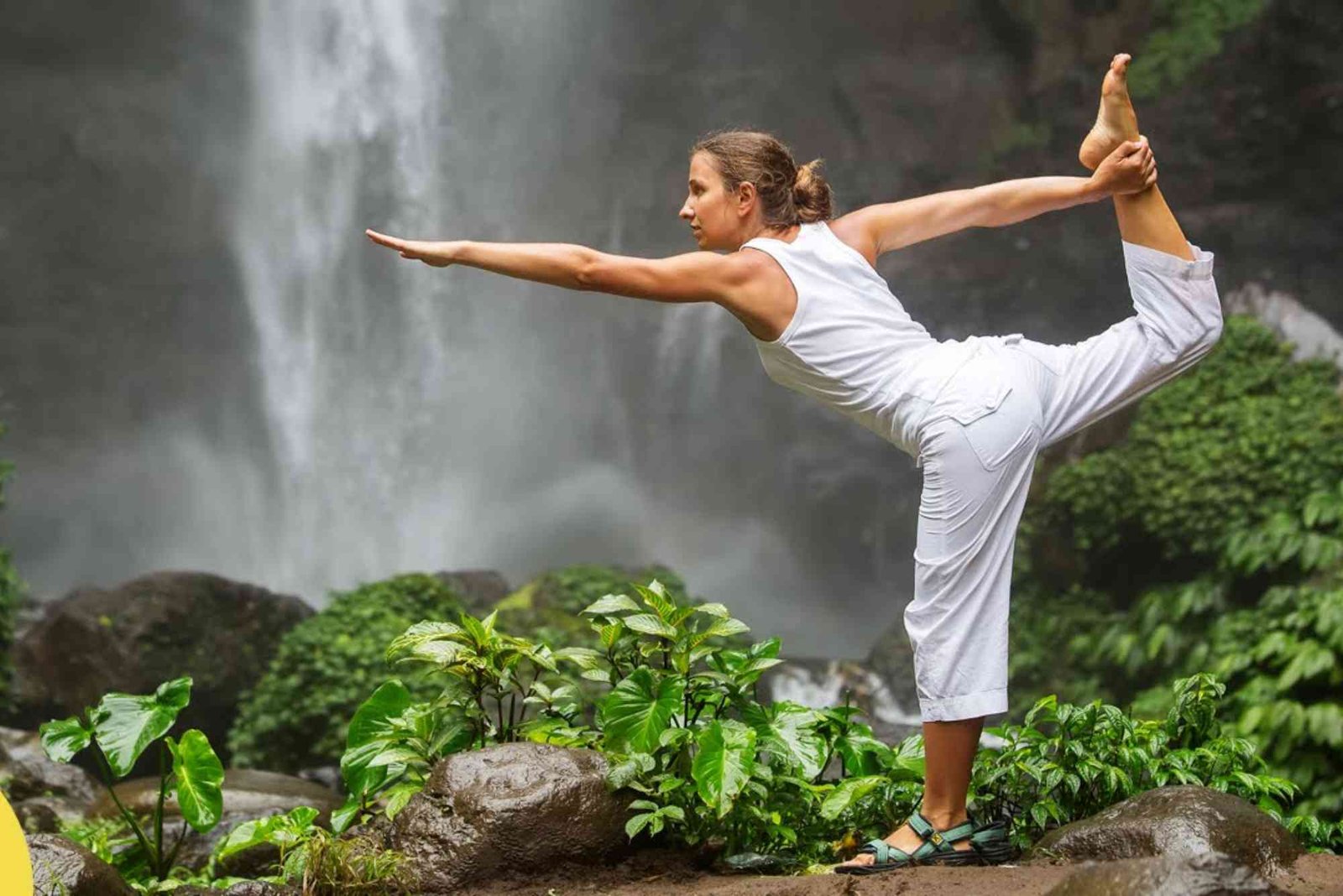Introduction
Music for yoga and meditation has the power to transform your entire experience. The right sounds can elevate your mood, deepen focus, and help you connect with your inner peace. Whether you’re a yoga instructor or a beginner, understanding how to create or choose the perfect music for your sessions is essential. This detailed guide walks you step by step through the process of creating, selecting, and using music that aligns perfectly with the energy of yoga and meditation.
The Importance of Music in Yoga and Meditation
Music is more than background noise — it’s a vibrational tool that influences mood, energy, and focus. During yoga, calming music helps regulate breathing and body flow. In meditation, soft instrumental sounds or nature tones guide the mind into stillness. Many experts agree that sound frequencies affect our brain waves, encouraging relaxation and mindfulness.
When music matches the rhythm of your breathing or movements, it enhances concentration. It’s why so many yoga practitioners say that music feels like “the heartbeat of the practice.”
Understand the Purpose of Your Practice
Before creating or selecting music, define your intention. Are you aiming for relaxation, strength, or balance? For meditation, is your goal inner silence or emotional healing? Each purpose requires a different kind of music.
-
For relaxation yoga (like Yin or Restorative Yoga), choose slow ambient music with soft tones.
-
For energizing yoga (like Vinyasa or Power Yoga), go for rhythmic beats and light percussion.
-
For deep meditation, prefer natural sounds such as rain, waves, or Tibetan singing bowls.
Understanding your purpose ensures the music becomes part of the experience — not just a background sound.
Choose the Right Tempo and Tone
Tempo plays a crucial role in setting the pace of yoga and meditation. Fast beats energize, while slow tempos relax. The ideal tempo for most yoga sessions ranges between 60–90 beats per minute, which matches the average heart rate during calm breathing.
For meditation, use ambient or drone-based music without lyrics. Lyrics can distract the mind, while pure sound waves promote stillness. Soft instrumental tones, such as flutes, harps, or sitars, work best for centering energy.
If you’re producing your own track, keep in mind the emotional tone. Minor scales induce introspection, while major scales promote joy and positivity.
Align Music with Yoga Poses and Phases
Every yoga session follows a natural flow — warm-up, peak, and cool-down. Matching your music to these stages enhances the flow and helps participants stay present.
During the warm-up, use soothing sounds that ease the body into movement. As the session intensifies, shift to slightly upbeat music with a steady rhythm. For the cool-down and savasana, return to slow, meditative sounds that allow the body and mind to settle.
This gradual shift in sound mirrors the internal transformation happening during yoga, making the practice more immersive.
Experiment with Sound Layers
Professional yoga music often includes layers — soft background drones, gentle melodies, and occasional nature sounds. These layers build depth and emotion. For instance, a combination of a bamboo flute, ocean waves, and soft bells can evoke a deep sense of peace.
If you’re designing your own playlist or composing, use mixing tools like Audacity or GarageBand. Experiment with natural sound effects, binaural beats, or white noise to find your unique balance.
Adding subtle changes every few minutes keeps listeners engaged without breaking focus.
Consider the Power of Silence
Silence is a vital part of music for yoga and meditation. In meditation, silence is not the absence of sound — it’s the sound of stillness. Integrating moments of silence between tracks allows practitioners to absorb the energy of the music and focus inward.
These quiet moments enhance mindfulness and allow a smoother transition between poses or breathwork sessions.
Create a Playlist for Your Yoga or Meditation Style
Building a playlist is the simplest way to organize your session. Group songs or sounds based on the energy flow of your yoga class or meditation routine.
Start with grounding sounds to center the mind, then move into rhythmic pieces for energy, and finally end with calm tones for reflection. A well-crafted playlist should feel seamless from start to finish.
For inspiration, you can explore Music For Yoga Tips from businessmini.com, which offers valuable insights and ready-made playlists for different yoga styles.
Use Authentic and Ethical Music Sources
Many instructors now prefer to use royalty-free music or tracks made specifically for wellness practices. This ensures that your sessions remain professional and copyright-safe. Websites like SoundCloud, Free Music Archive, or dedicated yoga music platforms offer a wide range of tracks for personal or commercial use.
Always support authentic artists who create music for meditation and mindfulness. Their work often carries the spiritual essence needed for genuine transformation.
Personalize Your Music Experience
Every individual resonates differently with sound. Try recording your own chants, humming, or mantra recitations to personalize your music. Adding your voice or instruments like crystal bowls or chimes can make the experience unique.
Personalization also helps your students or listeners connect deeply to your sessions. Whether you use technology or traditional instruments, focus on vibration and emotion — not perfection.
Optimize Sound for Different Environments
Sound behaves differently in various spaces. A yoga studio may have echo, while an outdoor meditation space might blend natural noise. Test your playlist in the environment before using it in a session. Adjust volume and tone so that the sound supports the practice without overpowering it.
If teaching online, ensure high-quality audio. Use noise reduction tools and select music that maintains clarity even at low volume.
Evaluate the Emotional Response
After each session, reflect on how the music affected your focus, energy, and relaxation. Did it help deepen meditation? Did it distract at any point? Honest feedback from participants can guide your next playlist.
Emotional response is the ultimate test of success. If the music makes you feel more present, calm, and inspired, it’s working perfectly.
Benefits of Music in Yoga and Meditation
Music impacts the nervous system, helping to lower cortisol (stress hormone) and increase dopamine (happiness hormone). Studies show that soothing sounds slow breathing, improve concentration, and reduce anxiety.
In yoga, music enhances flow and motivation. In meditation, it bridges the gap between the conscious and subconscious mind. Over time, your mind learns to associate certain sounds with calmness, making relaxation easier to achieve.
Common Mistakes to Avoid
One common mistake is using music that’s too loud or has distracting lyrics. Always test your tracks before the session. Another mistake is ignoring the emotional arc — sudden changes in tempo can disrupt concentration.
Avoid using random playlists. Instead, choose intentional music that aligns with the spiritual or physical goals of your session.
Expert Advice for Long-Term Practice
Experienced yoga instructors recommend refreshing your playlists every few months. This prevents monotony and allows you to explore new soundscapes. Keep an open mind — traditional Indian ragas, Native American flutes, or Japanese koto music can all bring different energies.
For professional guidance, read the Music For Yoga And Guide on businessmini.com to explore advanced techniques for curating the best tracks.
Creating or choosing music for yoga and meditation is an art — one that blends rhythm, emotion, and intention. The right sound can turn a simple session into a deeply spiritual experience. Remember, the goal is harmony between body, mind, and spirit. Take time to explore, experiment, and evolve your soundscape. Whether you’re a teacher or a practitioner, music is your partner on this inner journey.
For further reading and expert playlists, explore the Related article on haramainrenter.com at haramainrenter.com. Start your own yoga playlist today. Feel the rhythm of your breath, match it with the music, and discover how sound can transform your mindfulness journey.
FAQs
What type of music is best for yoga and meditation?
Soft instrumental, ambient, or nature-based sounds work best. Avoid heavy beats or lyrical distractions.
Can I meditate without music?
Yes, silence can be equally powerful. Music is a supportive tool, not a requirement.
What instruments are commonly used in yoga music?
Flutes, sitars, singing bowls, gongs, and soft drums are popular choices for their soothing tones.
How long should a meditation music session be?
It depends on your goal. For beginners, 10–20 minutes is ideal. Advanced practitioners may go for an hour or more.
Is it okay to use the same playlist for every session?
Yes, but updating occasionally keeps your practice fresh and stimulating.















